Disir: Elusive Female Guardian Spirits Of Fate And Harbingers Of Death And War
A. Sutherland - AncientPages.com - Some believe the Disir in Norse mythology were malicious, harmful spirits, demons of death, destruction, and war who sought terrible things for the people they watched.
"The Dises" (1909) by Dorothy Hardy. Guerber, H. A. (Hélène Adeline) (1909). Myths of the Norsemen from the Eddas and Sagas. London: Harrap. This illustration facing page 170. Digitized by the Internet Archive and available from
https://archive.org/details/mythsofthenorsem00gueruoft . Image uploader: Haukurth. - CC BY-SA 4.0
Others suggest that the Norse people also believed in the positive influence of the Disir (Dises) in a person's life. These goddesses (spirits) make a separate female group in Scandinavian mythology. They are related to fertility and death.
The 'Disir '(singular, 'Dis') watched over one single individual, families, and even entire neighborhoods. They brought good to a home and its family. They were often associated with mother goddesses, who were powerful and highly respected mythological figures in different cultures and religions around the world.
The ancient people of Scandinavia also knew that these female guardian spirits were associated with death and needed to be respected. Therefore, they honored the Disir in private and public ceremonies known as disablot, the festival of Dis, where sacrifices were made to them.
According to ancient Norse beliefs, they arrived when children were born, and in this role, they function like Roman fairies. The Disir were also regarded as local land spirits that governed fertility. This role was also prevalent among ancient people in Scandinavia.
The famous and beautiful Norse goddess Freya was called Vanadis; it means she was an inhabitant of Vanaheim and the "Dis of the Vanir." Another goddess associated with Disir was the giantess Skadi (öndurdís) - the "Dise of the Skis."
"Idise" (1905) by Emil Doepler - "Idisen" impede an army while binding warriors and freeing others as described in the "Liberation of Prisoners" Merseburg Incantation. Walhall, die Götterwelt der Germanen. Martin Oldenbourg, Berlin. Page 13. Public Domain
The Disir are also mentioned in the twelfth-century Skaldic poem, Krákumál, also known as the "Lay of Kraka" and composed in the 12th century, most probably in the Scottish islands. The poem tells about the heroic deeds of a brave warrior and the hope that a violent and powerful revenge will follow his death. Such a warrior must soon experience the pleasures of Valhalla, according to the poem, which also contains a monologue in which Ragnar Lodbrok is dying.
As recounted in the Icelandic sagas, the dying Viking hero, Lodbrok, was captured by Aelle, King of Northumbria, who ordered him executed by throwing him into a pit filled with poisonous snakes.
In the mythology and beliefs of the pre-Christian Norse people, the Disir - undoubtedly enigmatic spiritual beings - are often identified with divine collectives as the Norns and the Valkyries. At one time, they are described as beings with typical warrior characteristics or, at another time, show their beneficial and protective relation to people.
From the Krákumál poem, we learn that the dying Ragnar says that Odin sent the Disir to invite him to Valhalla.
"We now wish to end,
home I invite the dísir*,
which Odin sendt me.
Glad shall I drink ale with the æsir
in excellence I will drink.."
On the other hand, there is another source, known as "Thidranda thattr", a short Icelandic saga dated to 13th-century, and set in Eastern Iceland in 996, only four years before Christianity was adopted by the Icelandic Althing (an equivalent of the Swedish - Thing).
According to the saga, Tirdrandi, sought to adopt Christianity in Iceland. Unfortunately, he ignored the warnings of Thorhall Seer or the Prophet and set off on a winter night (held 28 days after the Autumn equinox), and he is killed by a mysterious equestrian group of nine black-clad women with drawn swords. At the same time, nine white-clad women riding on white horses from the south attempt to defend Tirdrandi. In vain, Tirdrandi was killed by those in black.
The saga may be a symbolic story about the struggle between heathenry and Christianity in Iceland and describes the religious change in this country, which is quickly approaching.
Written by – A. Sutherland - AncientPages.com Senior Staff Writer
Copyright © AncientPages.com All rights reserved. This material may not be published, broadcast, rewritten or redistributed in whole or part without the written permission of AncientPages.com
Expand for referencesReferences:
Lecouteux, C. Encyclopedia of Norse and Germanic Folklore, Mythology, and Magic
Simek, R. Dictionary of Northern Mythology
Sass Robert, Heathenry: The Old Ways for Today
More From Ancient Pages
-
 Is A Viking Settlement And An Even Older Church Hidden Under St. Clement’s Church In Norway?
Archaeology | Apr 13, 2017
Is A Viking Settlement And An Even Older Church Hidden Under St. Clement’s Church In Norway?
Archaeology | Apr 13, 2017 -
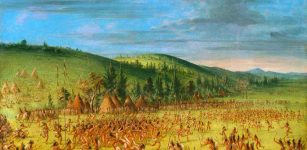 Lacrosse Was Invented By Native American Indians
Ancient History Facts | May 1, 2016
Lacrosse Was Invented By Native American Indians
Ancient History Facts | May 1, 2016 -
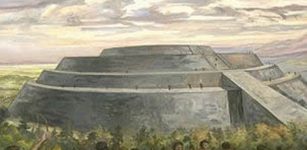 Cuicuilco Circular Pyramid: Ancient Astronomical Observatory And Place Of Power
Civilizations | Aug 24, 2021
Cuicuilco Circular Pyramid: Ancient Astronomical Observatory And Place Of Power
Civilizations | Aug 24, 2021 -
 Namoratunga – Kenya’s Fascinating Megalithic Site Oriented Toward Specific Stars And Constellations
Featured Stories | Jul 6, 2021
Namoratunga – Kenya’s Fascinating Megalithic Site Oriented Toward Specific Stars And Constellations
Featured Stories | Jul 6, 2021 -
 On This Day In History: Most Unusual Emperor Renzong Of Song Dynasty Was Born – On May 30, 1010
News | May 30, 2016
On This Day In History: Most Unusual Emperor Renzong Of Song Dynasty Was Born – On May 30, 1010
News | May 30, 2016 -
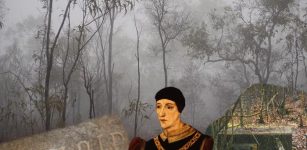 Cursed Dudleytown – What Really Happened In America’s Village Of The Damned In Connecticut
Featured Stories | May 27, 2020
Cursed Dudleytown – What Really Happened In America’s Village Of The Damned In Connecticut
Featured Stories | May 27, 2020 -
 Old Sword Decorated With Inscription And Related To 1173 Battle Of Fornham – Unearthed
Archaeology | Apr 8, 2017
Old Sword Decorated With Inscription And Related To 1173 Battle Of Fornham – Unearthed
Archaeology | Apr 8, 2017 -
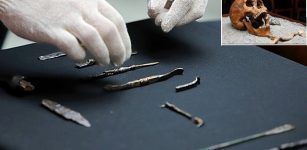 A 2,000-Year-Old Tomb Of A Roman Physician And His Medical Instruments Found In Hungary
Archaeology | May 2, 2023
A 2,000-Year-Old Tomb Of A Roman Physician And His Medical Instruments Found In Hungary
Archaeology | May 2, 2023 -
 Ants May Hold the Clues Why The Human Brain Decreased In Size 3,000 Years Ago – Scientists Say
Archaeology | Oct 22, 2021
Ants May Hold the Clues Why The Human Brain Decreased In Size 3,000 Years Ago – Scientists Say
Archaeology | Oct 22, 2021 -
 Neolithic Farmers Invented Methods To Fight Pests 8,000 Years Ago
Archaeology | Jun 30, 2022
Neolithic Farmers Invented Methods To Fight Pests 8,000 Years Ago
Archaeology | Jun 30, 2022 -
 Satellite Images Reveal Huge 4000-Year-Old Military Network In Syria
Archaeology | Dec 23, 2017
Satellite Images Reveal Huge 4000-Year-Old Military Network In Syria
Archaeology | Dec 23, 2017 -
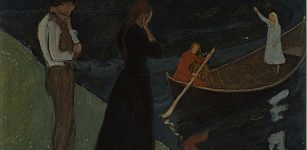 Tuonela – The Land Of The Dead In Beliefs Of Ancient Finnish People
Featured Stories | Nov 9, 2021
Tuonela – The Land Of The Dead In Beliefs Of Ancient Finnish People
Featured Stories | Nov 9, 2021 -
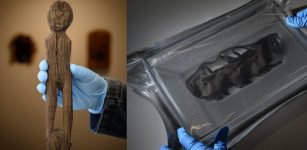 Ancient Artifacts Hidden Beneath The Ice In Danger As Glaciers Are Melting
Archaeology | Oct 19, 2020
Ancient Artifacts Hidden Beneath The Ice In Danger As Glaciers Are Melting
Archaeology | Oct 19, 2020 -
 King Geirrod Betrayed His Brother Agnar And Sent Him To Die But Justice Finally Prevailed
Featured Stories | Feb 14, 2024
King Geirrod Betrayed His Brother Agnar And Sent Him To Die But Justice Finally Prevailed
Featured Stories | Feb 14, 2024 -
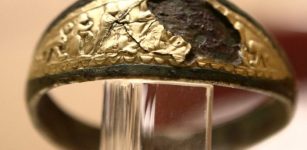 Unique 3,300-Year-Old Hittite Bracelet With Symbols Discovered By Farmer
Archaeology | Mar 28, 2022
Unique 3,300-Year-Old Hittite Bracelet With Symbols Discovered By Farmer
Archaeology | Mar 28, 2022 -
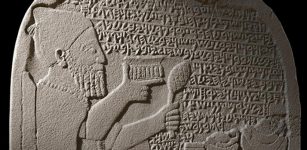 Ancient Kuttamuwa Stele And Iron Age Belief That Soul Lived In Funerary Slab
Featured Stories | Sep 10, 2016
Ancient Kuttamuwa Stele And Iron Age Belief That Soul Lived In Funerary Slab
Featured Stories | Sep 10, 2016 -
 New Interpretation Of A 4,000-Year-Old Cemetery In Present-Day Slovakia
Archaeology | Dec 21, 2022
New Interpretation Of A 4,000-Year-Old Cemetery In Present-Day Slovakia
Archaeology | Dec 21, 2022 -
 Merovingian Dynasty Of Long Haired Kings
Featured Stories | Jan 18, 2019
Merovingian Dynasty Of Long Haired Kings
Featured Stories | Jan 18, 2019 -
 Edward Of Woodstock “Black Prince” – Idol Of The English People And Terror Of The French
Featured Stories | Aug 22, 2017
Edward Of Woodstock “Black Prince” – Idol Of The English People And Terror Of The French
Featured Stories | Aug 22, 2017 -
 3,500-Year-Old Skull And Thighbone Discovered In Sapinuwa Antique City Of Central Anatolia
Archaeology | Dec 3, 2019
3,500-Year-Old Skull And Thighbone Discovered In Sapinuwa Antique City Of Central Anatolia
Archaeology | Dec 3, 2019


